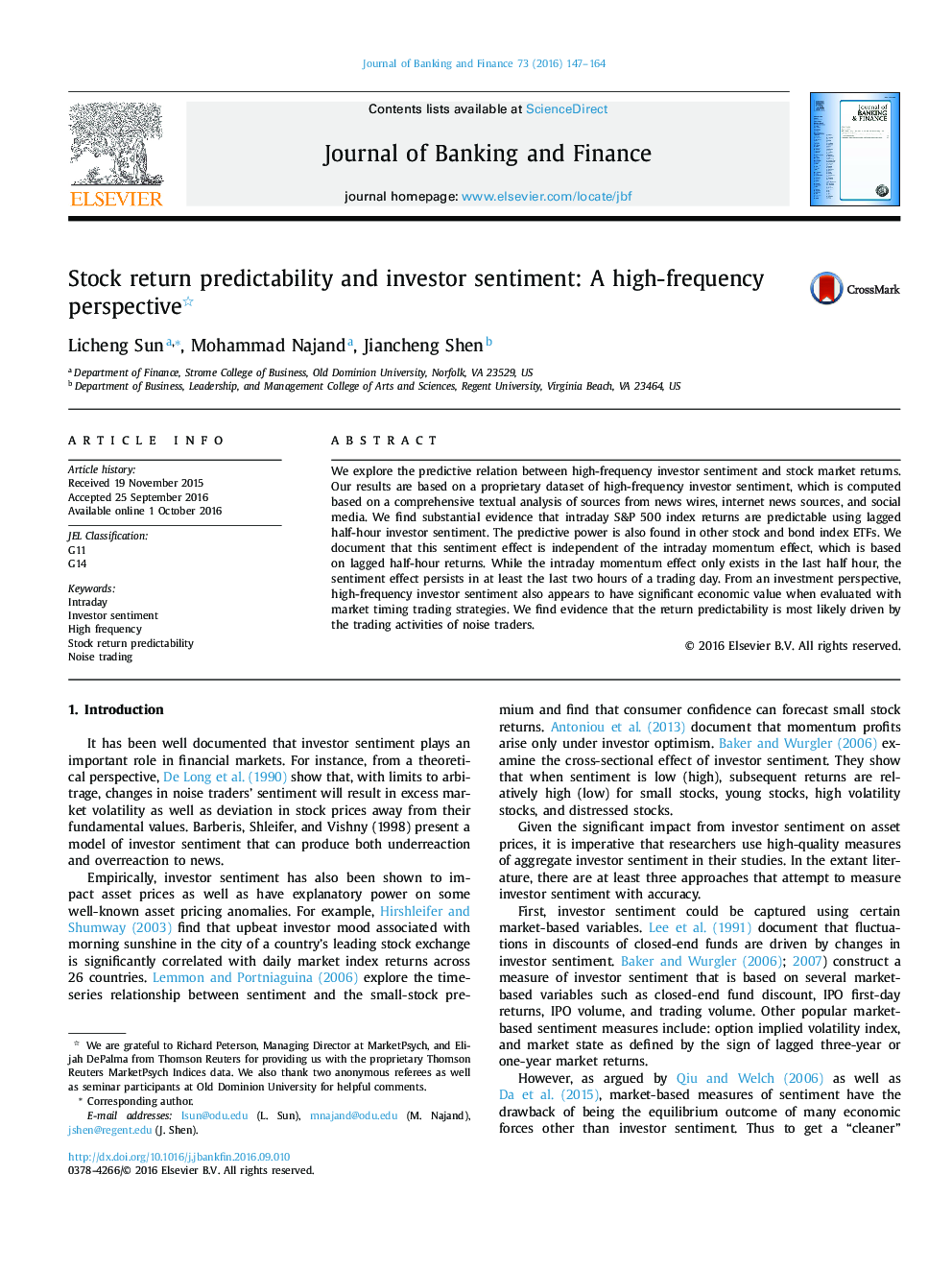| Article ID | Journal | Published Year | Pages | File Type |
|---|---|---|---|---|
| 5088131 | Journal of Banking & Finance | 2016 | 18 Pages |
Abstract
We explore the predictive relation between high-frequency investor sentiment and stock market returns. Our results are based on a proprietary dataset of high-frequency investor sentiment, which is computed based on a comprehensive textual analysis of sources from news wires, internet news sources, and social media. We find substantial evidence that intraday S&P 500 index returns are predictable using lagged half-hour investor sentiment. The predictive power is also found in other stock and bond index ETFs. We document that this sentiment effect is independent of the intraday momentum effect, which is based on lagged half-hour returns. While the intraday momentum effect only exists in the last half hour, the sentiment effect persists in at least the last two hours of a trading day. From an investment perspective, high-frequency investor sentiment also appears to have significant economic value when evaluated with market timing trading strategies. We find evidence that the return predictability is most likely driven by the trading activities of noise traders.
Related Topics
Social Sciences and Humanities
Economics, Econometrics and Finance
Economics and Econometrics
Authors
Licheng Sun, Mohammad Najand, Jiancheng Shen,
